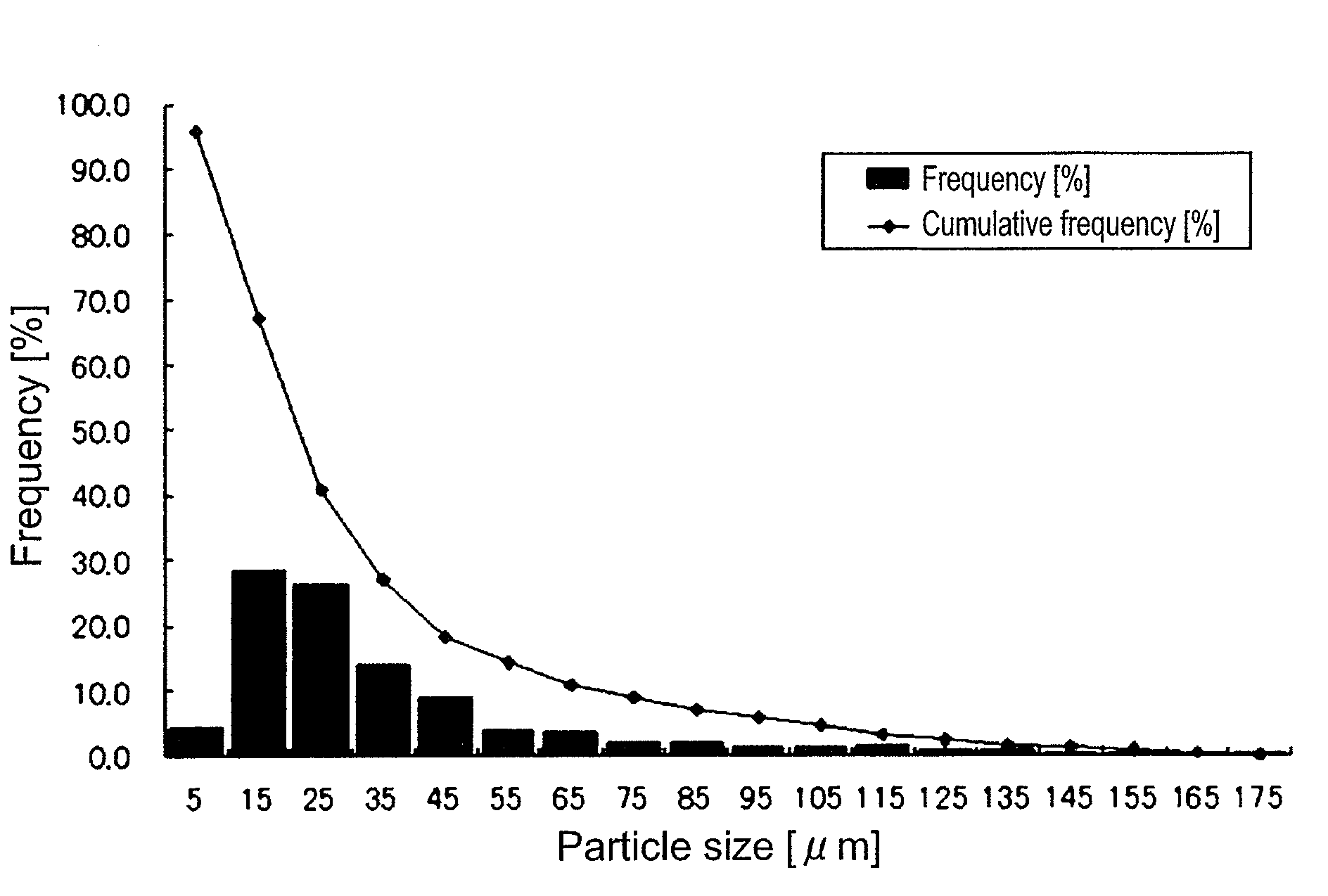Sintered ceramic, slide part therefrom, and process for producing sintered ceramic
a technology of sintered ceramics and slide parts, applied in the direction of shafts, bearings, mechanical equipment, etc., can solve the problems of reducing the service life of the shaft, abnormal wear, and increasing the friction coefficient, and achieves excellent sliding properties, minimal cracking, and dense structure
- Summary
- Abstract
- Description
- Claims
- Application Information
AI Technical Summary
Benefits of technology
Problems solved by technology
Method used
Image
Examples
example 1
[0080]In Step A, 4 parts by weight of artificial graphite with a mean particle size of 30 μm and 3 parts by weight of carbon black with a mean particle size of 43 nm were added to 100 parts by weight of silicon carbide powder with a mean particle size of 0.7 μm. There were further added 0.6 part by weight of boron carbide as a sintering aid, 2 parts by weight of a phenol resin in terms of carbon, 3 parts by solid weight of polyvinyl alcohol as a binder and 0.6 part by weight of polyethylene glycol (polymerization degree: #400). A starting mixture was thus obtained.
[0081]In Step E, the compact was sintered at 2190° C.
[0082]No cracking was found upon observing the obtained sintered body. Also, as a result of observing the structure of fractured and lapped surfaces of the sintered body, graphites with two different mean particle sizes, 2 μm and 30 μm, were found in the silicon carbide parent material.
example 2
[0083]In Step A, 6 parts by weight of artificial graphite with a mean particle size of 30 μm and 3 parts by weight of carbon black with a mean particle size of 43 nm were added to 100 parts by weight of silicon carbide powder with a mean particle size of 0.7 μm. There were further added 0.6 part by weight of boron carbide as a sintering aid, 2 parts by weight of a phenol resin in terms of carbon, 3 parts by solid weight of polyvinyl alcohol as a binder and 0.6 part by weight of polyethylene glycol (polymerization degree: #400). A starting mixture was thus obtained.
[0084]In Step E, the compact was sintered at 2200° C.
[0085]No cracking was found upon observing the obtained sintered body. Also, as a result of observing the structure of fractured and lapped surfaces of the sintered body, graphites with two different mean particle sizes, 2 μm and 30 μm, were found in the silicon carbide parent material.
example 3
[0086]In Step A, 3 parts by weight of artificial graphite with a mean particle size of 50 μm and 4 parts by weight of carbon black with a mean particle size of 43 nm were added to 100 parts by weight of silicon carbide powder with a mean particle size of 0.7 μm. There were further added 0.6 part by weight of boron carbide as a sintering aid, 2 parts by weight of a phenol resin in terms of carbon, 3 parts by solid weight of polyvinyl alcohol as a binder and 0.6 part by weight of polyethylene glycol (polymerization degree: #400). A starting mixture was thus obtained.
[0087]In Step E, the compact was sintered at 2200° C.
[0088]No cracking was found upon observing the obtained sintered body. Also, as a result of observing the structure of fractured and lapped surfaces of the sintered body, graphites with two different mean particle sizes, 2 μm and 50 μm, were found in the silicon carbide parent material.
PUM
| Property | Measurement | Unit |
|---|---|---|
| mean particle size | aaaaa | aaaaa |
| mean particle size | aaaaa | aaaaa |
| particle size | aaaaa | aaaaa |
Abstract
Description
Claims
Application Information
 Login to View More
Login to View More - R&D
- Intellectual Property
- Life Sciences
- Materials
- Tech Scout
- Unparalleled Data Quality
- Higher Quality Content
- 60% Fewer Hallucinations
Browse by: Latest US Patents, China's latest patents, Technical Efficacy Thesaurus, Application Domain, Technology Topic, Popular Technical Reports.
© 2025 PatSnap. All rights reserved.Legal|Privacy policy|Modern Slavery Act Transparency Statement|Sitemap|About US| Contact US: help@patsnap.com



